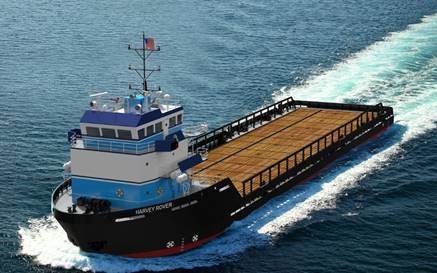
US based Harvey Gulf announced on Tuesday that it has signed a pair of one-year charters in Nigeria, for the placement of two US-flag 3250DWT DPS-2 platform supply vessels (PSV). Both PSVs are capable of working in shallow water ports with 4.5 meters of transit depth and will depart for Nigeria in late June.
The company said it also expects to send two 1,000-square-meter deck vessels to the area in the third quarter.
CEO Shane Guidry commented, “We are continuing with our commitment to our shareholders of doing all we can to continue to generate positive EBITDA and cash flow, which cannot be achieved without operating globally. In 2018, our EBDITA was generated two ways, 50% was from long term non-cancelable legacy contracts, and 50% from the spot market and new contracts.
“Since making the commitment to provide global service less than nine months ago, we now have vessels contracted in six countries: Mexico, Trinidad, Suriname, Guyana, Nigeria and, of course, the United States.
“Additionally, we are in discussions to bring MPSVs and LNG-Dual Fuel PSVs to the North Sea, Brazil and Australia later this year and into 2020, as well as DPS-2 FSIV’s into Angola.”
When asked about future plans for Harvey Gulf, Guidry said, “Companies need to merge in order to create larger operating profiles and reduce costs, thus increasing investor returns. Over the years, Harvey has done exactly that with the purchase of three U.S. competitors. Together with my management team, we stand ready to merge and operate any combined business.”


